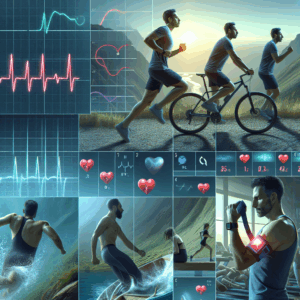
A peek into your heart, rather than making it beat faster, reveals some critical information that could be a game-changer in managing your overall cardiovascular well-being.
Routine physical activity is essential for the prevention of chronic diseases like diabetes, heart disease, and even certain types of cancer. It’s rightly said – ‘Your life lies in your hands,’ or in this case, shall we say ‘heart’? But do you need to perform exercises that raise your heartbeat to a very high level? Let’s explore!
Understanding your heart rate during physical activity is crucial. Knowing your Maximum Heart Rate (MHR) can help determine the right intensity level for your exercises. But how to find out your MHR? It’s simpler than you think — just subtract your age from 220.
The basic concept is that a vigorous-intensity activity is one in which your heart rate is 70 percent to 85 percent of your maximum heart rate. This is where various high-intensity workouts, sprinting, uphill cycling, or heavy weight lifting come into play.
On the other hand, moderate-intensity activities are those where your heart rate is 50 percent to 70 percent of your maximum. This is where exercises like brisk walking, swimming, or leisure cycling fit in.
Studies suggest that both moderate-intensity and vigorous-intensity exercises are beneficial. However, the latter provides a higher increment of cardiovascular fitness and more substantial results in less time. So, is higher always better when it comes to your heart rate? Not necessarily! It’s about tailoring the exercise to your body and preferences. Remember, moderation is key.
The idea is to incorporate a mix of both types into your routine. For example, someone just starting might lean more on moderate-intensity exercises. An experienced training athlete might focus more on vigorous-intensity exercises. Since each person’s fitness level varies, the balance between the two should be personalized.
Keeping track of your heart rate while working out allows you to adjust the intensity based on your comfort and safety levels. Vital tools like heart rate monitors or fitness trackers can be very beneficial.
In summary, the heart is not just the body’s most potent muscle; it’s your health’s barometer. With the right exercises, intensity regime, and adequate consideration to your MHR, you could unlock a healthier version of the fantastic being that is you!
So folks, get your heart in the game. Your workout’s intensity is not merely about pushing your physical limits constantly. It’s about understanding your heart, its beats, and harnessing its power in the healthiest way possible. Reward your heart. It’s the only one you’ve got.





